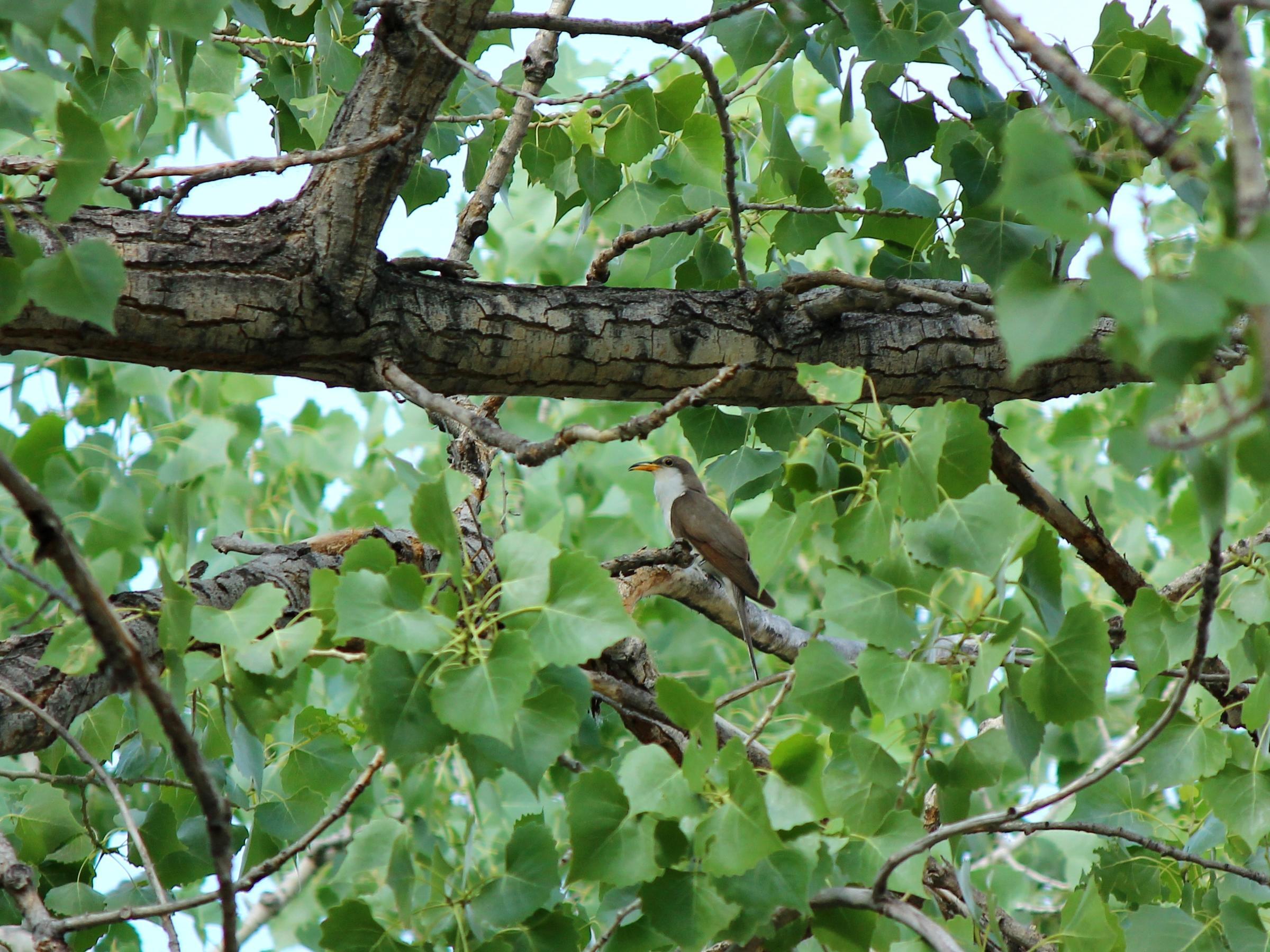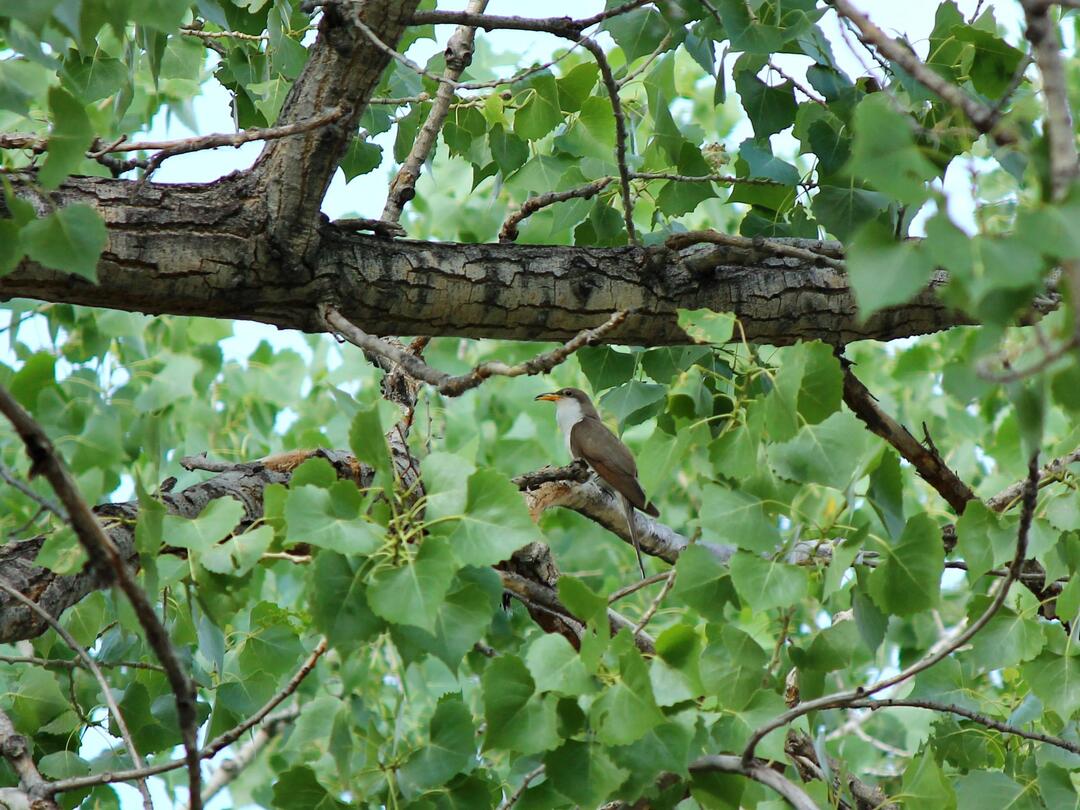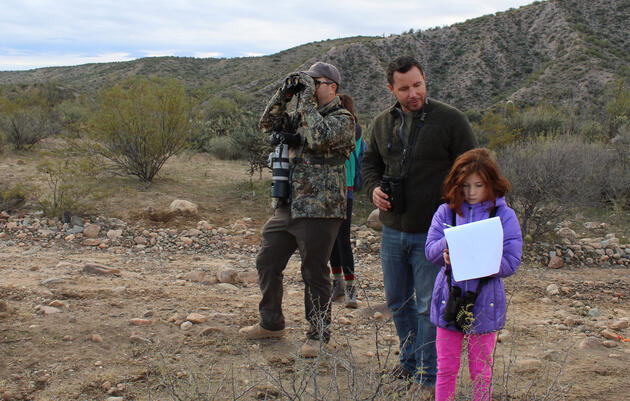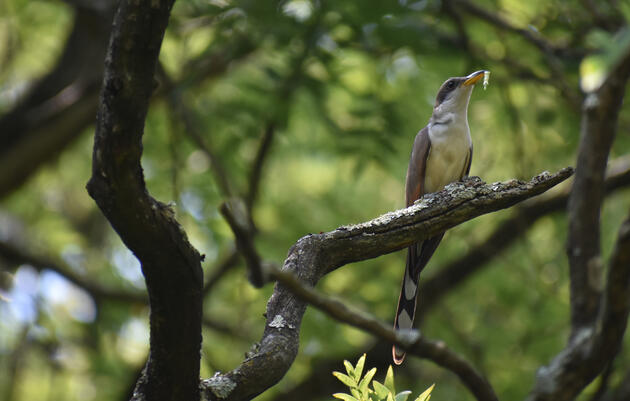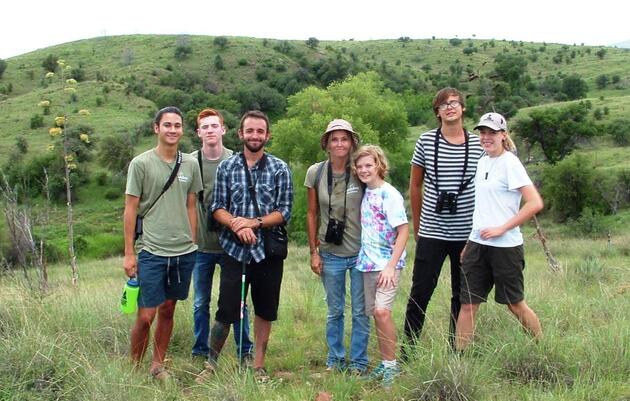It’s only 5 a.m., and already the sweat beads on my forehead drip on to the clipboard as I start the day’s data sheet.
Overhead, the sky is a gray mat pressing all life beneath it flat with leaden humidity. The cicadas are deafening as we trudge quietly to our first survey point, and the coffee slowly kicks in. We are surveying for Western Yellow-billed Cuckoo on the Agua Fria National Monument.
“Is that a real bird?” my mother asks. She’s wary of me now that I’ve jokingly made-up so many obscure bird names. I can’t help myself. How would she ever know?
Yes, mom, it IS a real bird… but not an ordinary bird in any sense.
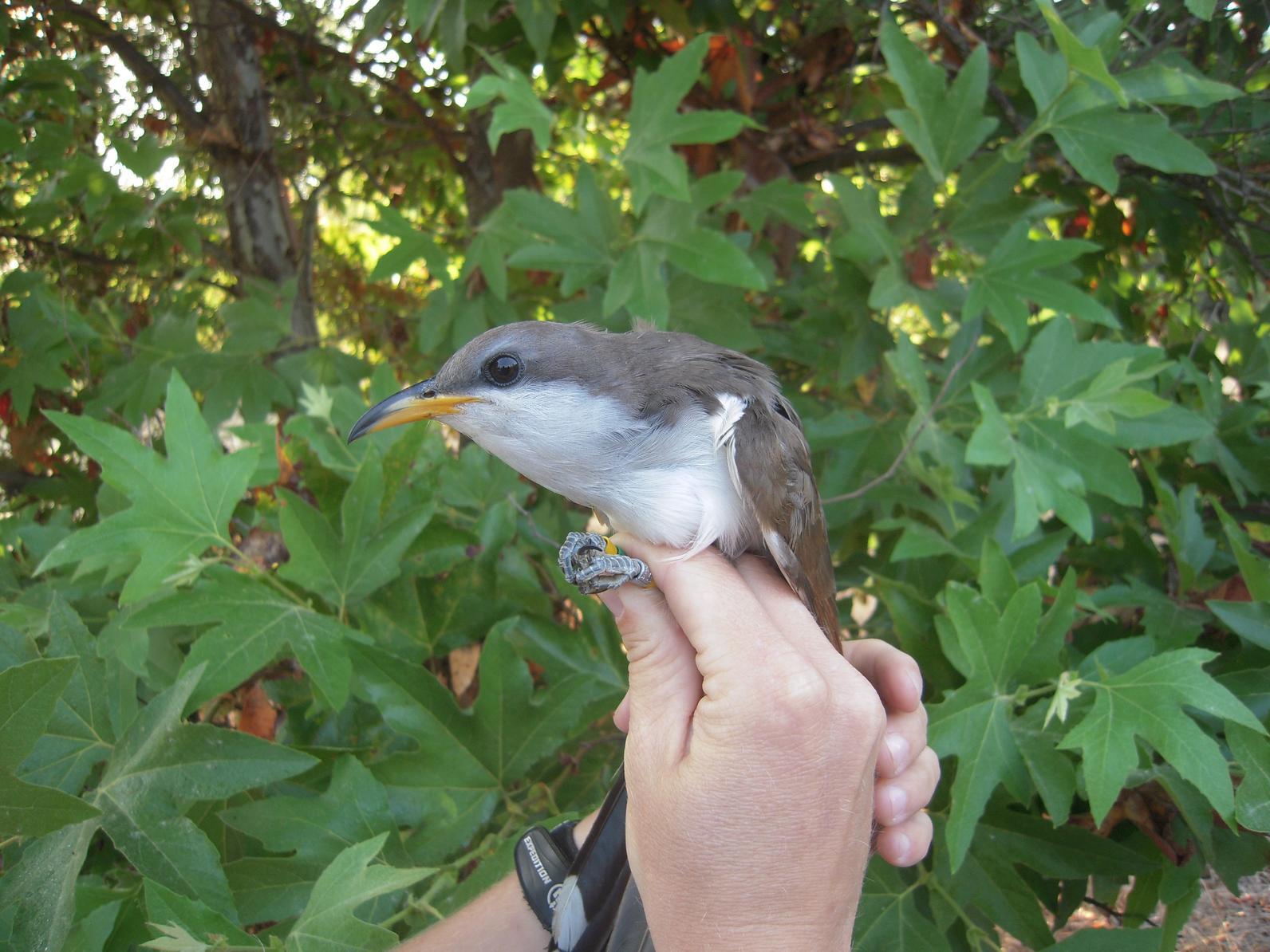
Dove-sized but long-tailed, this lovely, skulking, riparian denizen turns typical bird behavior on its head. As one of the last migrants to arrive in Arizona, you’d think the birds would get right to nesting and raising young, but that isn’t always the case. Patient above all else, Cuckoos await the steamiest monsoon days and the insect productivity that they provide before nesting.
Nest structures themselves are little more than afterthoughts of twigs thrown together, and paternity of young is often not clear—there is a good deal of egg dumping and extracurricular mating—but adults are vigilant and attentive.
Cuckoo babies go from helpless gumballs to fully in feathered birds in about 7 days. In contrast, it takes most birds about 14 days to grow their first feathers.
Cuckoos are highly secretive and typically hang out in leafy riparian trees like the Fremont Cottonwood and Goodding’s Willow. To find each other in the dense green gloom, they call to each other. To survey for them, we call to them, too.
Their contact call is a distinctive wooden knocking… but today, no one is responding to our efforts. All is still, windless. Even the cicadas are eerily silent.
I have that uncanny feeling of being watched and glance behind me, 5 meters above my head. Sure enough, there sits a silent cuckoo, perfectly put together with stainless white breast and gleaming bill colored like fresh honey, watching our efforts with interest.
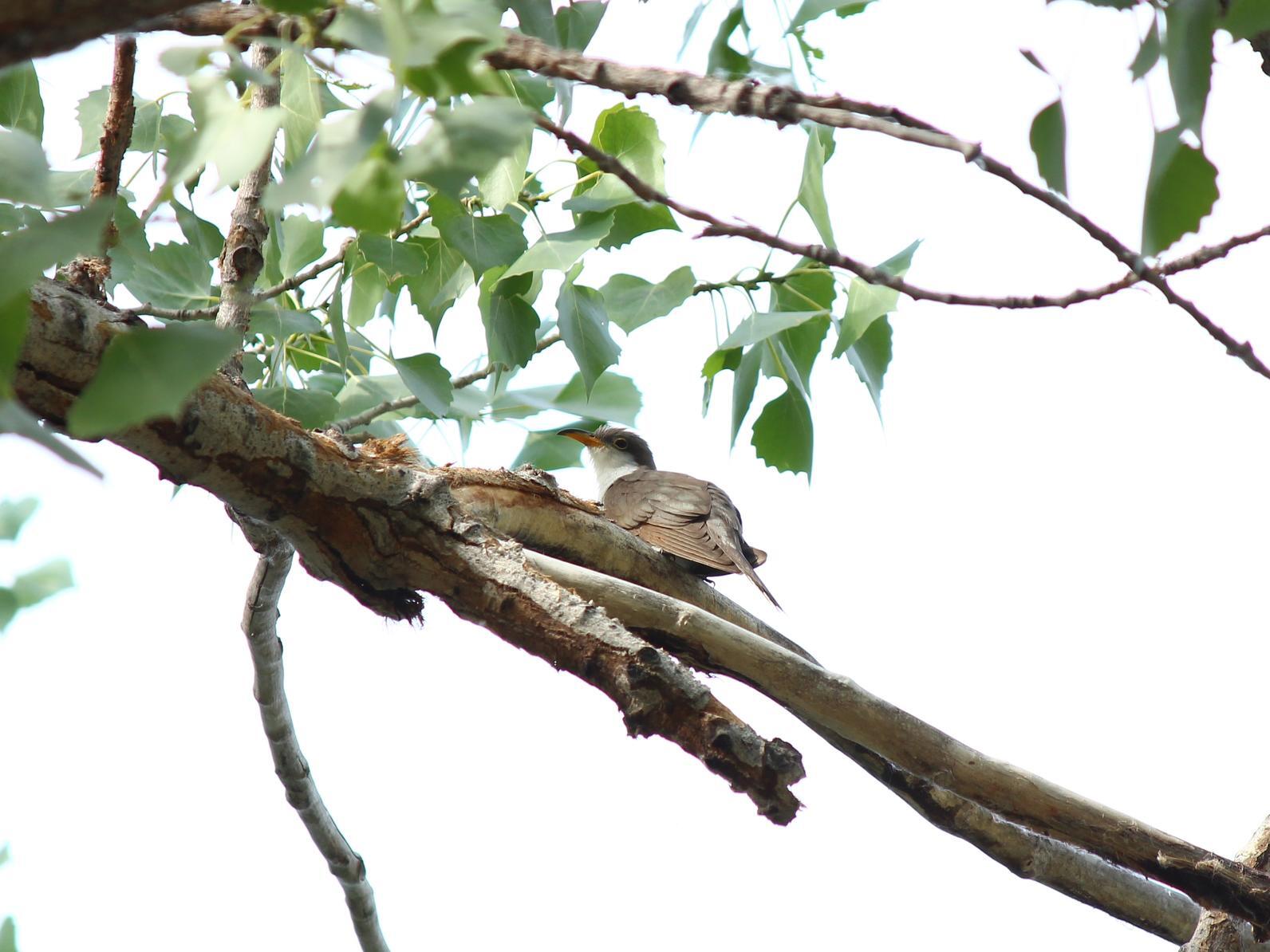
When our eyes meet, the bird flattens itself into a hunched posture as if to disappear. Nice try. In a matter of seconds and three wing flaps, it does disappear into the tree but not before thrilling us and improving the morning mood. We got one!
Western Yellow-billed Cuckoos have been steadily disappearing throughout their range for decades. Reasons for the decline include riparian habitat loss and dewatering. In other words: development and drought. In 2014, the US Fish and Wildlife Service added the bird to their Threatened species list—just a step down from endangered status. Our surveys are an effort to combat this decline.
Beginning in mid-June, Audubon Southwest’s survey team will be back in the field, for our ninth consecutive annual effort. Thanks to a growing team of Audubon chapters, partner organizations, volunteers, interns recruited through our high school field trip program, and our new Mackenzie Fellows, the surveys have expanded—beyond the Agua Fria, to mesquite forests on the San Pedro River, oak drainages within the grasslands of the Appleton-Whittell Research Ranch, and the headwaters of the Verde River.
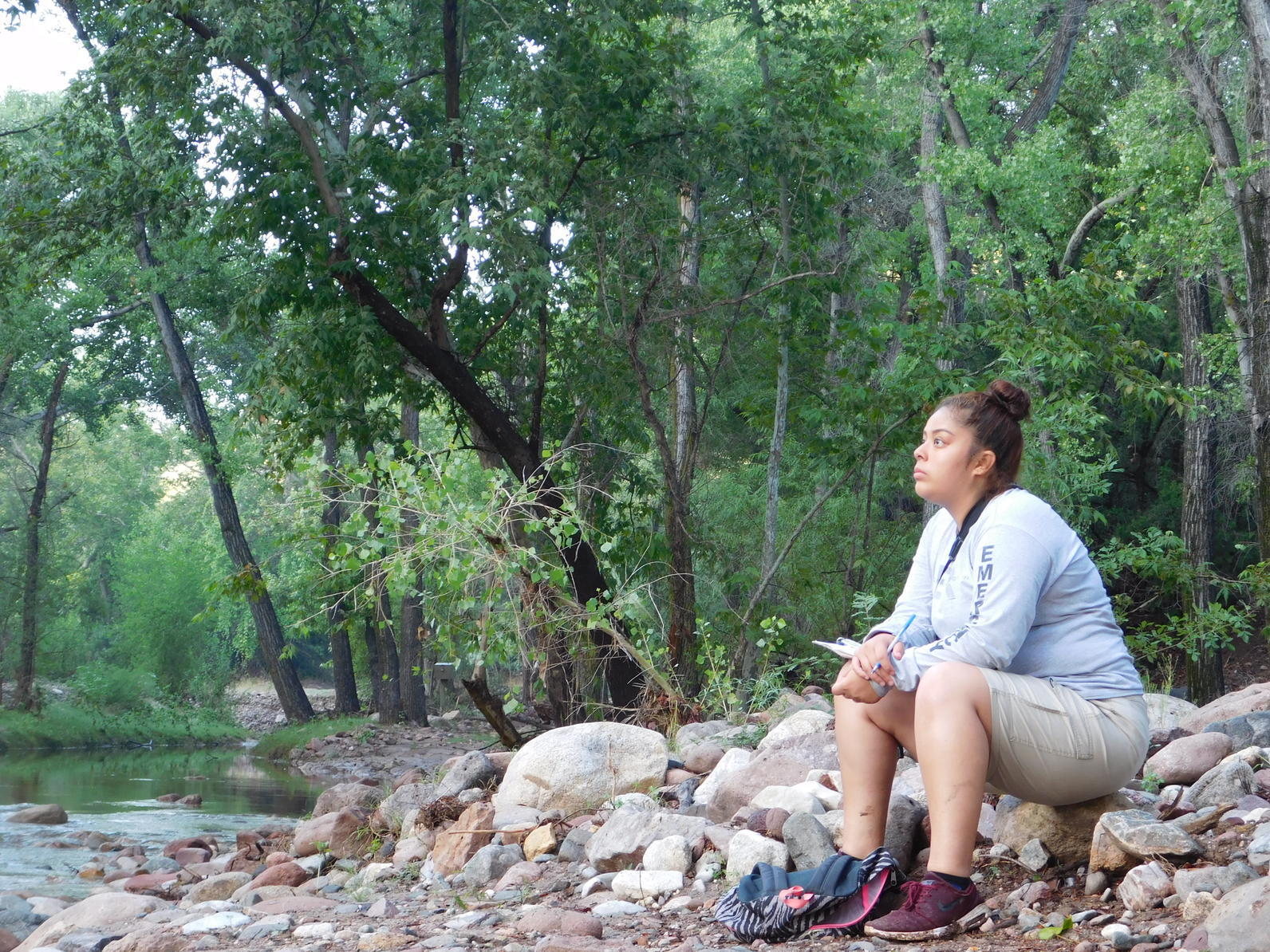
In addition, for the fourth year in a row, Audubon staff, interns, and Fellows will be facilitating the US Fish and Wildlife Service’s annual Yellow-billed Cuckoo surveyor training – enabling surveyors across the bird’s range to collect much needed data about its distribution and abundance.
As excited as we are to get back into the field, we know that counting cuckoos won’t be enough to protect the rivers that they, and all of us, depend on.
With record low snowpack across the lower Colorado River Basin and 52 percent chance of a shortage at Lake Mead by 2020, sound policy that ensures sustainable and reliable water supplies is critical not just to the Yellow-billed Cuckoo, but to habitats, birds and other wildlife, communities, and economies across the West. To help us with this important work, sign up for the Western Rivers Action Network today.
The Western Yellow-billed Cuckoo is elusive–but it doesn’t have to be.
At the end of the summer, we will share our annual Field Crew Highlights illuminating the surveys and summer interns, so stay tuned.

